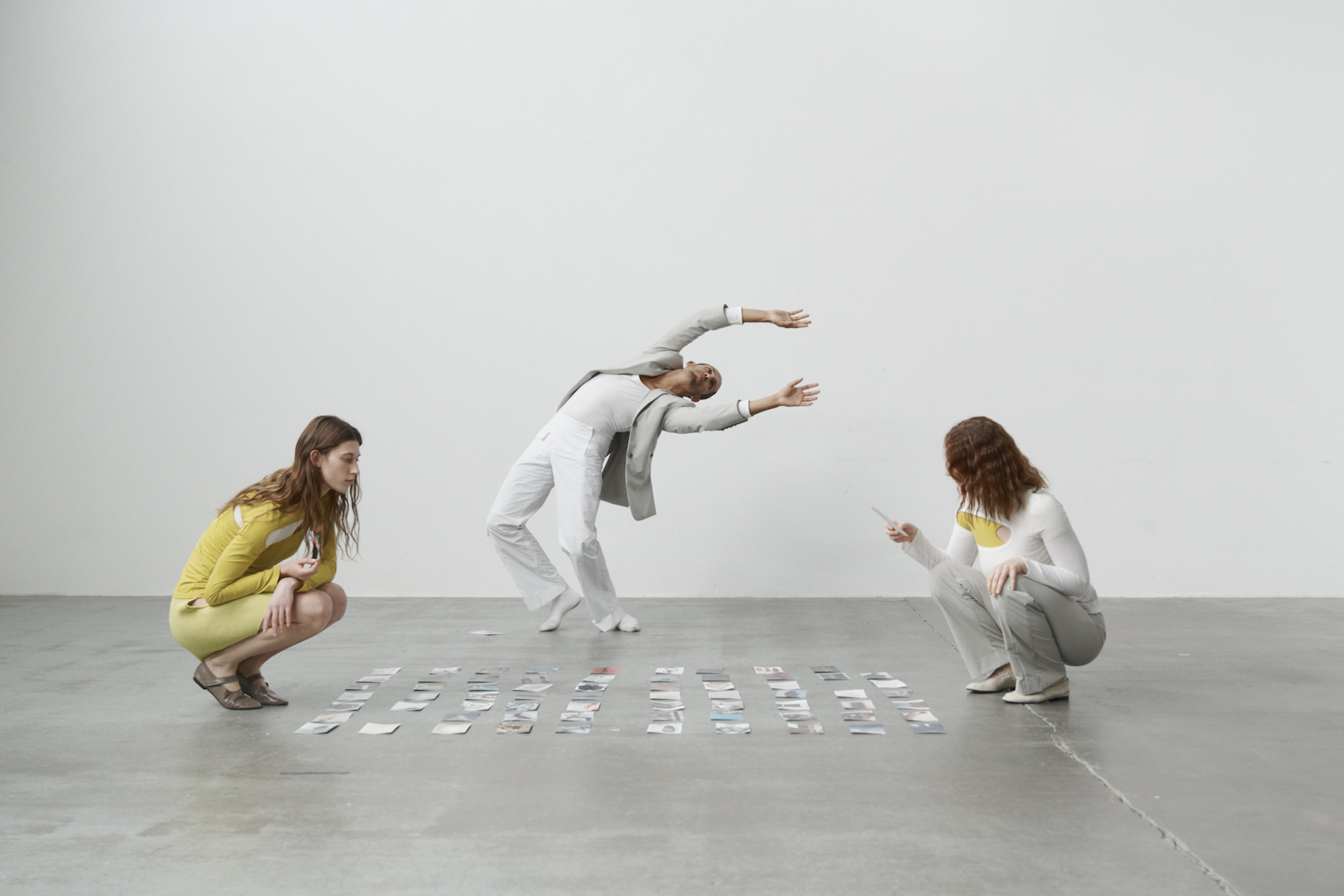René Scheibenbauer’s clothes are inspired by the body in movement
Drawing inspiration from the colours and textures of the Herzog & de Meuron-designed Trinity Laban dance centre, rising London-based fashion designer René Scheibenbauer’s latest collection transports its wearer into the rehearsal room

Designed by Swiss architects Herzog & de Meuron, Trinity Laban has been shaping modern ideas about bodies in motion since it opened in Deptford, south east London, in 2003. A former RIBA Stirling Prize winner – and the world’s largest purpose built contemporary dance centre – its structure features semi-translucent polycarbonate that infuses certain corners of the interior with shades of turquoise, lime and magenta (a feature devised in collaboration with the artist Michael Craig-Martin), which in turn informed the palette of Austrian designer René Scheibenbauer’s new collection Motion, and the final chapter of his accompanying short film Rehearsal in Progress, a collaboration with movement director and dance artist Lydia Walker.
René Scheibenbauer: ’Rehearsal in Progress’

‘I went to do research in the library and my pictures all became blue from the reflection,’ explains Scheibenbauer, relaying the genesis of pieces of celadon blue assembled in knit, cotton and nylon. He returned to the Laban for fittings and rehearsals, while the final video and images were shot by Max Glatzhofer in a studio in North London: a potently bare space that becomes inhabited by dancers Lea Orož, Ronan Cardoza and Zakarius Harry. At one point an iPod is removed from a pocket, the sound of the click wheel introduced in place of the friction of fabric, elsewhere ‘score cards’ laid on the ground invite new physical shapes to be explored. Premiered at London bookstore Tenderbooks earlier this year, film is a first for Scheibenbauer and Walker, who initially met at an improvisation workshop at Tate Modern. ‘I was looking for people to collaborate and do research with,’ recalls the designer. Walker subsequently became intimately associated with his work and process, involved both as a creative partner and a fit model.
Reflecting on his earliest curiosity in the medium, Scheibenbauer describes attending ballet classes as a child, ‘I was just fascinated by the people around me, always in a dream, so I didn't really pick up the choreography.’ A later viewing of Wim Wenders’ Pina installed further interest, and his design practice has since enjoyed a keen adjacency with themes of movement and physical expression, even in moments when he wasn’t explicitly privy to it. ‘At Central Saint Martins’ I did some contemporary dance workshops, wanting to know more about this world, then in my final year project my tutor was like, “so it's all about movement” – I didn't see it at all. In the end, I made these abstract pieces that guide the body to move within,’ he notes.

‘I later started a dialogue with dancers, wanting to know their relationship with the body and clothing, and how they construct identity – dancers have such a strong awareness of how something feels,’ he continues. ‘My background is tailoring, so I wanted to merge these two worlds, create structured shapes, but using four-way stretch fabric so it's malleable to the body and feels really soft, but looks sharp.’ With Motion he achieves this via a balance of properties, borrowed both from informal dancewear and stricter, street attire. Necklines are largely simple, occasionally giving way to cut-outs that loop across the arm and chest, while trousers feature noughties-esc external pockets. Colours, grouped into chapters for the film, swerve Scheibenbauer’s earlier work with pattern to focus on block shades of white, grey, mustard and black, in addition to the aforementioned blue.

Interested in studying an arena largely obscured from public view, the rehearsal room, Scheibenbauer and Walker arrived at the film’s moniker with a view to foregrounding the operations of an exercise still taking shape. ‘The starting point, I guess, was bringing in the mundanity of dance and that open space. I liked the openness of ideas and research, something not being fixed but being in progress,’ says Scheibenbauer. ‘That's what I feel like as a designer. I'm trained creatively, but I’m learning how to blend it with actually running a business, and learning about the industry.’ Choreographically, the pair expanded the concept to consider how one navigates a city. ‘We looked at imagery within the city, like a blur of people in the street or music that had that dynamic,’ shares Scheibenbauer. ‘Lydia was looking at rhythm and the movement that happens on a street, so there is a play around the idea of personal, intimate space existing within an abstract idea of city dynamics, and somewhat echoing a sense of natural social rhythm – of coexisting with others.’
René Scheibenbauer is available from the designer’s website, as well as APOC Store.
Receive our daily digest of inspiration, escapism and design stories from around the world direct to your inbox.

Zoe Whitfield is a London-based writer whose work spans contemporary culture, fashion, art and photography. She has written extensively for international titles including Interview, AnOther, i-D, Dazed and CNN Style, among others.
-
 Korean designer Yoonjeong Lee tells ordinary stories in extraordinary ways
Korean designer Yoonjeong Lee tells ordinary stories in extraordinary waysWallpaper* Future Icons: Yoonjeong Lee's work is based on a fascination for utilitarian objects, from pencils to nails, recreated with innovative casting methods
-
 Inside architect Andrés Liesch's modernist home, influenced by Frank Lloyd Wright
Inside architect Andrés Liesch's modernist home, influenced by Frank Lloyd WrightAndrés Liesch's fascination with an American modernist master played a crucial role in the development of the little-known Swiss architect's geometrically sophisticated portfolio
-
 Volvo’s quest for safety has resulted in this new, ultra-legible in-car typeface, Volvo Centum
Volvo’s quest for safety has resulted in this new, ultra-legible in-car typeface, Volvo CentumDalton Maag designs a new sans serif typeface for the Swedish carmaker, Volvo Centum, building on the brand’s strong safety ethos